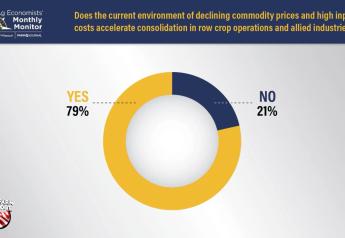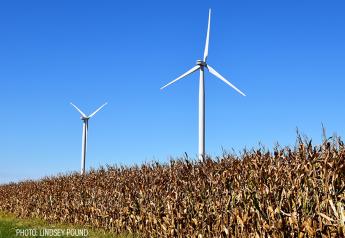Does Improved Soil Health Improve Water Quality?

Farm Journal Field Agronomist Ken Ferrie spends a lot of time thinking about soil health. This question has him concerned: Does improved soil health translate into improved water quality?
“So far, the answer is not always,” Ferrie says. Nutrients reach water two ways: in sediment carried by surface runoff and as dissolved nutrients in surface runoff and subsurface water. “Reduced tillage and cover crops, if done right, can definitely reduce sediment loading,” Ferrie says.
Dissolved nutrients are another matter. Nitrate is a source of concern in drinking water, and the combination of nitrate and phosphorus causes algae blooms in water bodies. When algae decomposes, it uses up the oxygen in the water, making it unlivable for some aquatic creatures.
“The dilemma that’s coming to light is healthy soil releases more nutrients into the soil solution,” Ferrie says. “That’s good for plant growth, but nitrate and dissolved (ortho) phosphorus are highly leachable. In our studies, it has been more difficult to keep nitrate and dissolved phosphorus out of surface runoff and tile water under no-till and no-till with cover crops than under tilled soil.”
The first two years of a four-year study at Kansas State University echoed Ferrie’s observations that no-till with a cover crop increased the loss of dissolved phosphorus versus no-till without a cover. Dissolved phosphorus is a bigger threat to water than particulate phosphorus, which is attached to soil particles and can be controlled by reducing soil erosion. Dissolved phosphorus is much more bioreactive (80% to 90%) than particulate phosphorus (30% to 35%).
“There also are indications nitrate and dissolved phosphorus are stronger in surface runoff under no-till and cover crops because of the decomposing residue,” Ferrie says. “While cover crops can pick up nutrients, reducing their loss through drainage water, at some point that residue decomposes. Decomposition releases nutrients at the soil surface, where they can be carriedoff in runoff water,” he adds.
Protecting water quality seems to depend more on balanced fertility and the 4Rs (right product, right time, right time, right placement) than on no-till or cover crops, Ferrie says. “As we strive to improve soil health, we must look at all these practices, as well as edge-of-field practices such as tile gates and bioreactors," he encourages. "It would be a mistake to promote only a couple soil health practices, which might fail to improve water quality.”







